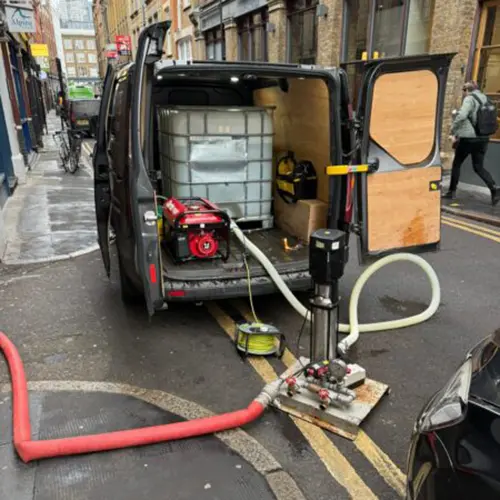Fire safety relies on well-maintained equipment, and dry risers play a crucial role in multi-story buildings. These systems ensure firefighters can quickly access water during emergencies. Since they remain empty until needed, regular maintenance and dry riser tests are essential to keep them functioning properly. In this blog, we’ll walk you through dry riser tests, their maintenance schedule, and why compliance is essential.
What Is a Dry Riser?
A dry riser is a network of vertical pipes installed in a building, allowing firefighters to connect hoses and rapidly pump water to upper floors during a fire. Unlike wet risers, dry risers do not contain water when idle. Because of this, regular testing is critical to confirm they remain airtight and ready for action.
How Are Dry Risers Tested?
To keep dry risers in peak condition, they undergo two essential tests: visual inspections and pressure tests. These procedures help detect potential problems early while also ensuring compliance with fire safety regulations.
1. Visual Inspection (Every Six Months)
The first step in maintaining a dry riser system is a bi-annual visual check. During this inspection, engineers will:
- Examine all inlet and outlet valves for any signs of damage or leaks.
- Check for obstructions or tampering that could affect performance.
- Ensure all caps and seals are securely in place.
- Verify that signage is clear, legible, and correctly positioned.
By conducting these routine checks, minor issues can be identified and resolved before they escalate into serious safety hazards.
2. Pressure Testing (Annual Test)
Once a year, dry risers must undergo a full pressure test to confirm they can handle the required operational demands. This process involves several key steps:
- Filling the system with water through the inlet.
- Pressurizing the system to 10 bar for 15 minutes to check for leaks or pressure drops.
- Inspecting all joints, valves, and pipework for faults or weaknesses.
- Completing any necessary repairs before certifying the system.
By performing this test annually, building owners and managers can ensure the dry riser is always in top working condition.
Why Is Dry Riser Testing Important?
Neglecting dry riser maintenance can lead to catastrophic failures during emergencies. Regular testing provides several critical benefits, including:
- Ensuring compliance with BS 9990:2015, the British Standard for non-automatic fire-fighting systems.
- Guaranteeing the system operates effectively when firefighters need it most.
- Keeping building occupants and emergency responders safe.
- Meeting legal requirements, which helps avoid fines or penalties.
Who Should Carry Out Dry Riser Testing?
Only qualified fire safety engineers should conduct dry riser testing and maintenance. These professionals have the expertise to spot issues, perform necessary repairs, and ensure full compliance with safety regulations. Hiring experienced professionals ensures the system functions correctly when it matters most.
Final Thoughts
Dry riser testing isn’t just about meeting regulations—it’s about protecting lives and property. By scheduling inspections every six months and performing annual pressure tests, building owners and managers can ensure their fire-fighting infrastructure remains fully operational at all times.
If you’re responsible for a building with a dry riser system, now is the time to act. Schedule your next inspection today to stay compliant with fire safety laws and, most importantly, keep your building safe.

